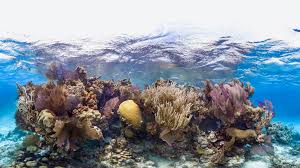The Smithsonian Environmental Research Center recently teamed up with Erinn Muller, a research representative at the Florida Keys National Marine Sanctuary, to host a webinar on January 21. The discussion highlighted efforts by Mote Marine Laboratory to combat coral bleaching along Florida’s coastline.
Why Coral Reefs Are Important
Coral reefs are more than just beautiful underwater structures; they are essential for marine life, coastal protection, and even human health. According to Muller, these reefs:
- Provide habitats for a quarter of all marine species
- Absorb wave energy, protecting Florida’s shorelines, homes, and businesses from hurricanes
- Support local fishing industries and tourism, generating income for many Americans
- Contain potential medical components for treating diseases like Alzheimer’s
However, despite their importance, 98% of Florida’s coral reefs have died due to mass bleaching, leaving them more vulnerable to diseases.
What Causes Coral Bleaching?
Coral is a living organism with a skeleton and tissue, which gets its vibrant colors from algae. These algae provide nutrients to coral through photosynthesis, helping them thrive.
Coral survives best in water temperatures below 30.5°C. But due to climate change, rising ocean temperatures cause the algae to die. Without these algae, the coral loses its color, turning white—a process known as bleaching. This weakens the coral and makes it more susceptible to disease and death.
How Mote Marine Laboratory is Restoring Coral Reefs
To combat coral loss, Mote Marine Laboratory and other environmental organizations have developed manual reef restoration techniques. According to Mote’s website, they have:
- Planted hundreds of thousands of corals along Florida’s Coral Reef
- Developed treatments for coral diseases affecting reefs worldwide
- Pioneered methods to grow, breed, and test coral for better resistance to climate change
Mote has also created a unique restoration strategy called “Mote’s Resilient Reef Restoration Cycle,” which includes two key processes:
- Asexual Fragmentation: Scientists break coral into smaller pieces, allowing them to grow faster. Once they reach the size of a small dinner plate, they are placed into underwater or land nurseries. Since all coral in a colony share the same DNA, they fuse when they touch, forming stronger reef structures.
- Underwater nurseries can grow 30,000 corals per year
- Land nurseries can grow 20,000 corals per year
- Sexual Reproduction: Scientists select the strongest and most genetically diverse corals to breed. These new corals are more resistant to rising ocean temperatures and can help build a resilient next generation.
Setbacks and Challenges in Coral Restoration
Despite its success, Mote Marine Laboratory faced major losses in the summer of 2023 when a severe coral bleaching event killed many corals in their water nurseries. But the team remains committed to its mission, continuing to breed and nurture temperature-resistant corals.
Mote also focuses on reef clean-ups to remove harmful algae that threaten coral health. They work with the Coral Reef Restoration Crab Hatchery Research Center, raising Caribbean king crabs to eat excess algae and create a healthier environment for growing corals.
How You Can Help Save Coral Reefs
Mote’s work depends on public support and volunteers. There are many ways to get involved, including:
- Becoming a volunteer (diving, fragmenting coral, assisting in nurseries)
- Donating to support coral restoration projects
- Visiting Mote’s aquariums to learn more
- Applying for internships to gain hands-on conservation experience
For more information on how to help, visit Mote Marine Laboratory’s website.
Disclaimer – Our team has carefully fact-checked this article to make sure it’s accurate and free from any misinformation. We’re dedicated to keeping our content honest and reliable for our readers.








